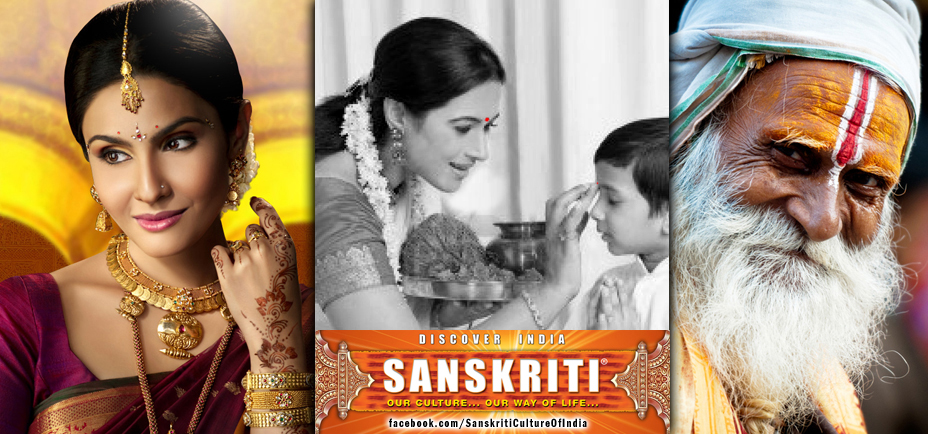A bindi is an auspicious mark worn by young girls and women in India. The name is derived from “Bindu”, a Sanskrit word for “point” or “dot” and is usually red in color made with vermillion powder which is worn by women between their eyebrows on the forehead.
The origin of the bindi can be found in ancient times but has lost this significance in modern life and is mostly worn all over the world as an accessory. However, bindis have a special significance even today in the Indian tradition. There are different colors worn for different occasions and stages in life, although most women these days don’t follow these rules of color anymore. Men also wear a Tilak during pujas (prayers) or religious ceremonies in India. There are many reasons as to why this practice started.
SIGNIFICANCE OF A BINDI FOR A MARRIED WOMAN:
If a woman wears a red bindi it shows that she is married and signifies true love and prosperity. Widows in India do not wear bindi normally, but they are allowed to wear a black coloured one in Southern India, showing their loss. However, young girls are free to wear bindi of any color.
USE OF THE BINDI IN A SPIRITUAL WAY:
In a spiritual view, bindi plays the most important role in Hindu culture. Every morning a Hindu takes a bath and sits in prayer just to seek the absolute truth through every prayer. However, it is true that one cannot sit in prayer the whole day. So when you leave the prayer room, you are expected to put some mark on your forehead, to remind you throughout the day about all the activities and the purpose of life. It is obvious you cannot see the mark on your own forehead every time so whenever you see it on another face, you will get a chance to recall the purpose of your life. The idea is to remember that all the things you are doing are dedicated towards the achievement of this supreme goal of self realization.
USE OF BINDI IN THE SOCIETY:
Society has always wanted to categorize or tag people in groups and the bindi performed a similar function in the ‘Social’ realm. The social purpose was to ward of the evil eye of the young unmarried girl by making her wear a ‘black’ Bindi. The married women wore a red Bindi. The 4 castes wore different coloured tilak though this is not followed except in very conservative families in the villages.
1. The Brahmins who were priests or academicians wore a tilak of white sandal wood signifying purity.
2. The Khatriyas (Kings, Warriors and Administrators) wore red tilak to signify valor.
3. The Vaishyas (Business men) wore a yellow tilak signifying prosperity.
4. The Sudra (service class) wore black tilak to signify service to the other classes.
USE OF WEARING BINDI FROM A HEALTHY VIEWPOINT:
From a health point of view, the bindi is worn between the eyebrows where the pineal gland lies. This is an important nerve center and applying sandalwood or ash keeps the nerves cool and so keeps one cool and conserves energy. In the past the bindi was made from the yellow and red sandalwood, red and yellow turmeric, saffron, various flowers, ash, zinc oxide. All these had cooling properties in nature. Today people wear bindis made with glue or glass and doesn’t benefit in any way but is more of an accessory.
SPIRITUAL SIGNIFICANCE OF A BINDI:
The Ajna Chakra is considered to be the place of the “Third Eye” where one applies the Bindi. The Ajna Chakra is the site where one finally loses Ahamkara (ego or sense of individuality) when one achieves self-realization or reaches a higher level of spirituality. It is a way to remind one another in the society to see through the mind’s eye and see the bigger picture of the “Universe as One”.










